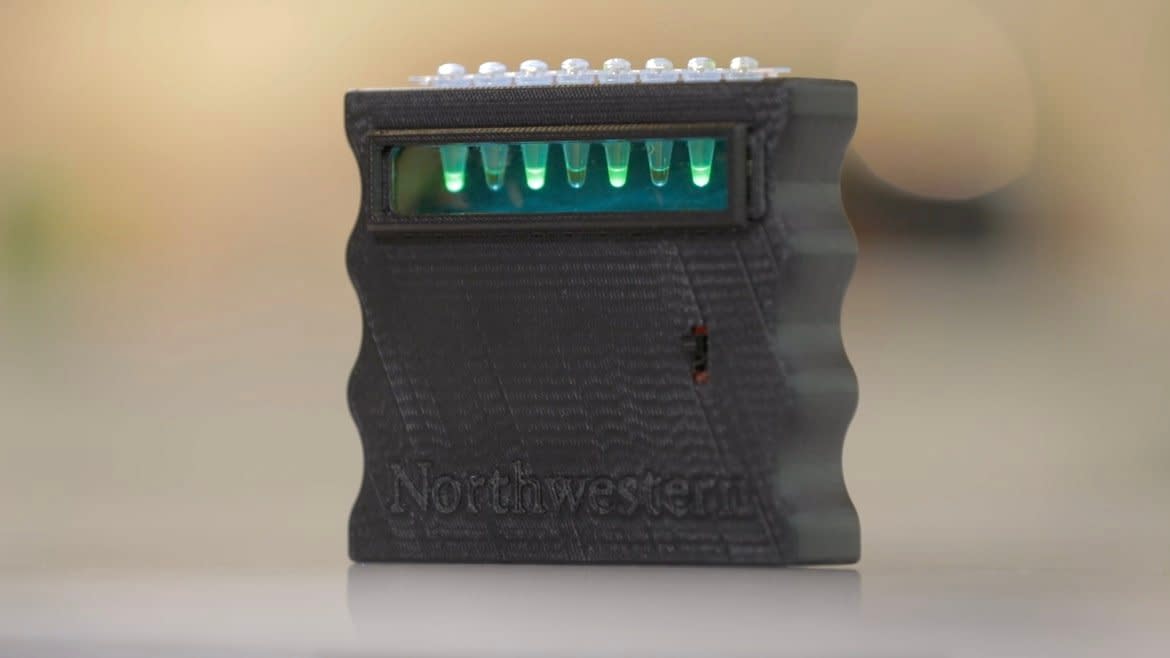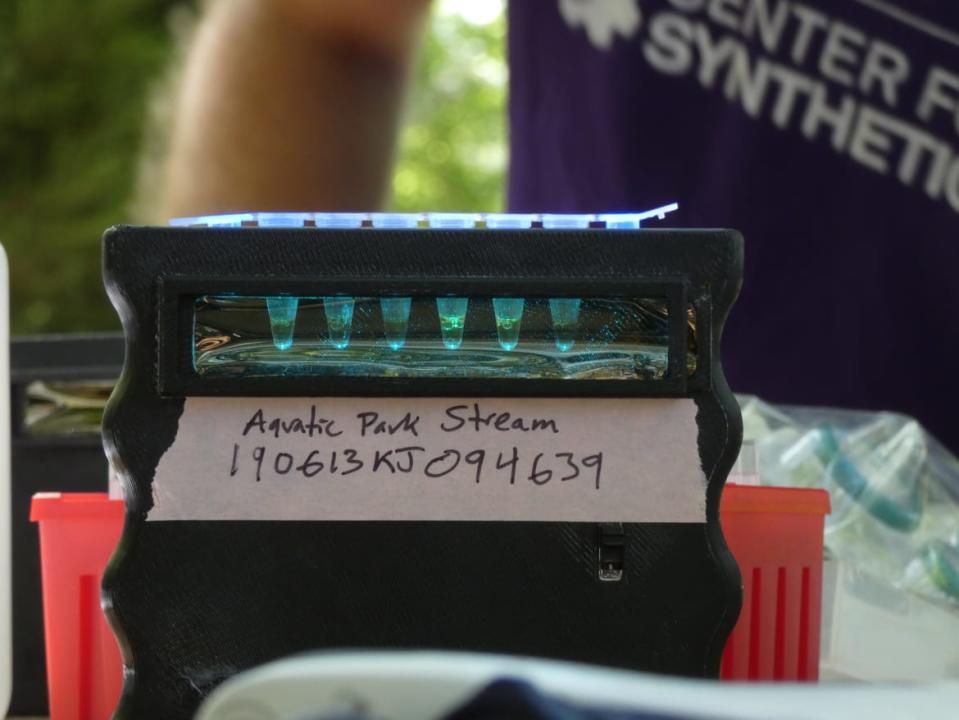This Cheap ‘DNA Computer’ Finds Water Toxins Within Minutes

Across the globe, clean water is not always a readily available resource. According to UNESCO, one in nine people worldwide drink from a water source that hasn't been adequately treated—not too surprising given the depressing fact that nearly 90 percent of countries dump their wastewater directly into rivers and oceans. Freshwater sources can be overwhelmed by pollutants from agricultural runoff, sewage systems, industrial waste, personal care products, and pharmaceuticals.
Environmental regulatory agencies like the EPA in the U.S. are supposed to ensure water quality remains safe for the population. But poorer communities in the developing world (and even in the U.S., as we've seen in instances like the Flint water crisis) don’t always have access to fast, cost-effective diagnostic tools that are still reliable.
But a research team at Northwestern University may have a solution, and it involves something they call a “DNA computer.”
Meet ROSALIND: a 3D-printed handheld device named after famed English chemist Rosalind Franklin, who discovered the molecular structure of DNA, and is also short for "RNA output sensors activated by ligand induction." The newest version of ROSALIND, capable of letting users know in just a few minutes whether their water is safe to drink, was introduced to the world in a new study published in Nature Chemical Biology on Thursday.

ROSALIND being used to test water impacted by California wildfires.
The device contains a row of eight small test tubes that glow an eerie green when a contaminant—like lead or an antibiotic—is detected. How much and how many of the test tubes glow is an indication of how much contaminant is present in the water sample.
One glowing test tube signifies there are trace amounts and also serves as a sort of control to show the device is working (much like the control window on a pregnancy test). If all eight tubes glow, that's bad news and means the water sample is severely contaminated, Northwestern University bioengineer and study lead author Julius Lucks told The Daily Beast. The entire device is built to be seamlessly modified to test anything a user might want to test for.
The “DNA” label for ROSALIND isn’t just cute moniker. "There's a sensor that's going to do the molecular level detection of a toxin like lead, and that sensor is going to trigger some sort of gene expression reaction that we programmed that's being run by a 'cell-free extract system,'" said Lucks. That cell-free extract system is just as it sounds: a bunch of proteins, nucleotides and other genetic materials free-floating together without being inside an actual cell.
Once the cell-free extract system runs the program tripped by the contaminant, the information goes to a DNA-based computer downstream, which works much like a human brain to perform logical analysis, said Lucks.
Through an analog-to-digital converter, the presence or lack of a contaminant then generates a digital output: the eerie fluorescent green.
This New Device Can Deliver Clean Drinking Water for Just $4
ROSALIND 2.0 builds off of a predecessor system first developed a few years ago and reported in July 2020 in Nature Biotechnology. While scientists in the past have engineered biosensors to detect pathogens or measure disease, they are limited by the survival of the cell and its own ability to sense toxic contaminants.
Lucks and his team’s cell-free system avoids those pitfalls. And to boot, ROSALIND 2.0 is able to sense a whopping 17 different contaminants in a single drop of water. To make the device shelf-stable for delivery and use in rural parts of the world they freeze-dried it—which doesn’t impact the DNA computer’s performance once water is added.
The diagnostic possibilities of ROSALIND are vast, Lucks said, and could be used not just for testing for contaminants but a myriad of other medical and environmental applications. But improving water quality and providing people in low-resource areas the diagnostic power to check their own water is a challenge his team wants to tackle head-on.
“In the past, we’ve done some pilot-type studies in Costa Rica, and we took [ROSALIND] out to California after one of these wildfires,” said Lucks. “We actually have an ongoing study right now with a variant of this whole sensing platform in Kenya. We’ve been spending a lot of work in this particular water space, just because it is a global challenge.”
It’s too early to say whether ROSALIND might have the same impact on science that its namesake had, but it could be a big step forward in arming communities with accessible information to safeguard public health.
Got a tip? Send it to The Daily Beast here
Get the Daily Beast's biggest scoops and scandals delivered right to your inbox. Sign up now.
Stay informed and gain unlimited access to the Daily Beast's unmatched reporting. Subscribe now.

